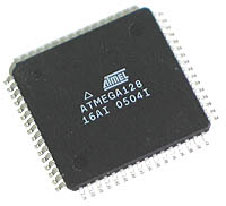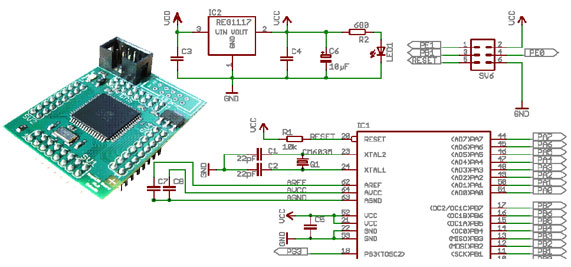|
|
Microcontroller
A Microcontroller is a device where CPU and limited associated resources such as memory, I/O are integration on the same single chip. Because of this integrated on a single chip, the reliability of a microcontroller is far superior to an equivalent system designed using CPU, memory, I/O interface chip on a printed circuit board. But it has limitation in terms of program memory, data memory and Input Output interfaces. Manufacturers of microcontroller like Intel, Motorola, Atmel, Hitachi, etc provide facilities for expansion of resource requirement for memory. However it is always advisable to use the Microcontroller in its single chip mode of operation rather than in the expanded mode. These Microcontrollers are available in sizes of 4 bit, 8 bit, 16 bit and 32 bit from various manufacturers.
We found ATMega128 microcontroller from Atmel company ideal for this experimental project for some of the following features: the device runs at 16MHz fast enough; easy interface with other devices we wanted to use like JTAG interface with On Chip Debugging possibilities, 2 USART ports, 2-wire interface (compatible with I2C devices) Internal RC oscillation, self programming in short this device has it all or better to say has more than we need for the project.
More over, the ATmega128 is a low-power CMOS 8-bit microcontroller based on the AVR enhanced RISC architecture. By executing powerful instructions in a single clock cycle, the ATmega128 achieves throughputs approaching 1 MIPS per MHz allowing the system designer to optimize power consumption versus processing speed.
 |
 |
| ATmega 128 Pin-out diagram |
ATmega 128 package |
 |
| Mega128 Module PCB |
| The diagrams are taken from the following website |
|